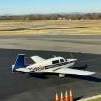Dumb Ice ??
-
Members Online
- Parker_Woodruff
- Skates97
- Scottknoll
- Ibra
- Pinecone
- redbaron1982
- Shadrach
- graham28105
- flyboy0681
- TangoTango
- StParkin
- Paul Thomas
- Trogdor
- toto
- bcg
- DXB
- McMooney
- MDMooney
- neilpilot
- N201MKTurbo
- Planejim
- DanM20C
- Rocket_Driver
- EugeneKha
- Deb
- acekng1
- Ragsf15e
- PT20J
- bixmooney
- Flik33
- Z W
- mpilot
- Rotorhead
- Guillaume
- skykrawler
- Marc_B
- Stickshaker
- GeeBee
- hazek


Recommended Posts